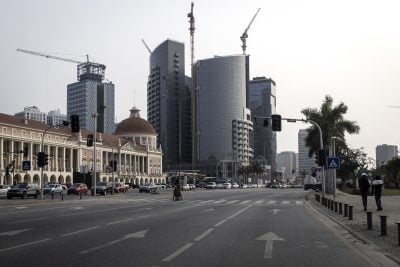The South African mining industry, for nearly a century and a half the nation’s economic mainstay, now looks at its future as a major industrial player through a different development lens.
Two or three years ago, it glumly observed the slow demise of the gold mining sector as it chased the yellow metal in ever-sparser veins buried more deeply than miners had ever ventured.
Then a reprieve appeared as the gold price shot up to close on $2,000/oz and suddenly even marginal mines took on El Dorado status. Adding to gold’s glitter was the pall that descended on platinum, its chief rival, proving that gold is still the world’s only universal money and the accepted hedge when the world’s economics go awry.
Mining commodities like copper, zinc, coal and iron, with which Southern Africa is particularly blessed, escaped the harshest affects of the economic downturn – saved by the voracious development appetites of China and India.
Gem stones weren’t as lucky and diamonds especially took a massive hit as the luxury market retired hurt. But this was only temporarily and diamonds’ recovery was spectacular to the point of a shortage of rough that rocked the jewel market and sent prices skyward. The girl’s best friend was back.
However resilient the South African mining sector proved to be in the pressure cooker climate of the 2008/09 recession, the euro derailment soon followed and one thing became clear. As strongly as the eastern economies might be growing, especially those of China and India, they are not yet strong enough to mop up South African export orders lost or cancelled by European markets in financial disarray.
While there is an undoubted south-south swing in trade and investment, to the West’s detriment, such interaction has a way to go before Europe no longer matters to Africa as an export destination. Right now, unstable European markets are hurting, and South Africa is feeling the pain, not the least its mining and mineral export sectors.
Taking the cue from the last available numbers, the mining industry’s watchword for this year is one of caution. The third quarter showed a sharp fall in mining (17.4% quarter on quarter, the high number contributed to by strike action) along with a 1.9% drop in manufacturing.
South Africa’s jobs creation challenge
Standard Bank had expected the GDP to come at 1.6% with senior economist, Thabi Leoka, describing mining and manufacturing performance as “significantly disappointing”, cautioning that “we think they will remain negative in 2012, and will undermine growth seeing they are export driven.” She adds that in the current sluggish global growth, these sectors were unlikely to turn the corner quickly.
“The challenges to GDP growth remain external in the face of Europe’s debt crisis easing demand for exports and mining output and will make it difficult for the government to reach its target of creating 5m jobs by 2020,” she cautions.
The ambitious employment creation target was expressed by President Jacob Zuma early last year and immediately became a challenge for mining and manufacturing, South Africa’s biggest job markets next to agriculture.
Both must battle with bellicose labour unions, an unstable rand that is more often than not overvalued and export stifling, a largely underskilled workforce, input and labour cost increases and slow-paced economic recovery.
“However,” note global human resource consultants Michael Page, “the mining sector is still crucial to South Africa. It permanently employs around 500,000 workers and a similar number indirectly, and is recognised as the fifth-largest mining industry in the world, contributing 5% of South Africa’s GDP.”
Miners watch the exchange rate
Led by gold, most metals trade in US dollars and so it is with trepidation that South African mining houses watch the pitch and roll of the greenback in markets that have rarely been as fractious. A strong dollar means more rands for South Africa’s miners when dollar revenue is converted into local currency and right now, at around R8 to $1, salaries and supplies are affordable with some change for the bottom line.
Adding to the nervousness is rising risk aversion, says South Africa’s Finance Minister Pravin Gordhan. “Clearly the current weakness in the rand is beneficial for exporters but has the flipside effect of inflationary pressures which the Reserve Bank has to deal with. We need to look beyond attaining economic stability and towards investing in things that would unleash growth.”
Gordhan says South Africa is taking pre-emptive steps to cushion itself against the European contagion by shoring up the economy on a number of fronts.
“Firstly, we’re strengthening our financial sector and second we’re reinforcing our regulatory regime. We will also focus on fiscal sustainability. We do not want South Africa’s debt to be unsustainable. Finally, we want to focus on spending money on the right things.”
Want to continue reading? Subscribe today.
You've read all your free articles for this month! Subscribe now to enjoy full access to our content.
Digital Monthly
£8.00 / month
Receive full unlimited access to our articles, opinions, podcasts and more.
Digital Yearly
£70.00 / year
Our best value offer - save £26 and gain access to all of our digital content for an entire year!
 Sign in with Google
Sign in with Google 


